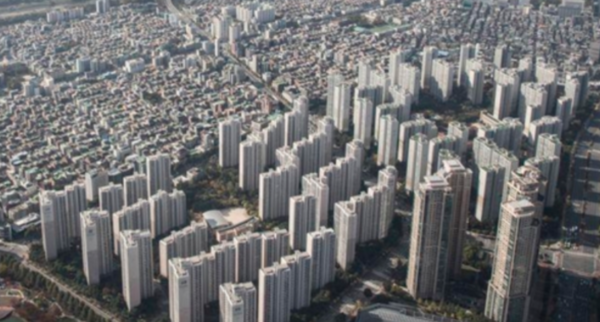Enter 2021.01.10 10:27 | Revision 2021.01.10 10:39
Hong Nam-ki “Must induce multi-homed people to put out existing houses”
In order to stabilize Seoul’s soaring house prices, a plan to temporarily ease the punitive level of capital gains tax on multi-homed people is being discussed inside the party and the government.
In a situation where the acquisition and transactions of real estate such as houses are tightly tied together as a countermeasure for real estate, the intention is to open a certain portion of the transaction and open the way to bring the sale of multi-homed people to the market. Discussions are underway to ease the transfer tax for multi-homeowners, as the argument that it is difficult to achieve tangible home price stabilization only by expanding the supply of new pre-sale apartments, which has been visible since the inauguration of Minister of Land, Infrastructure and Transport Byun Chang-heum.
According to the Democratic Party and government authorities on the 10th, plans to ease the policy on the transfer tax for multi-homed people in the area subject to adjustment from June this year are being carefully reviewed inside the party.
It is a stage to ponder the direction because of the issue of the effectiveness of whether or not it can actually bring a sale to the market and the possibility of being interpreted as a retreat of the existing real estate policy.

Deputy Prime Minister Hong pointed out the effectiveness of the housing supply measure, saying, “The policy decision to provide new homes and policies to induce multi-homed people to put out existing homes can be taken as supply measures. It was announced as a policy to expand supply in line with it,” he explained. As there weren’t many products that actually came out despite the three-dimensional pressure on multi-homed people last year, it is analyzed that there is a possibility to change the policy to appeasement measures such as during the transfer tax and easing.
The plan to ease the transfer tax is likely to be announced along with the real estate supply plan being made by the new Minister of Land, Infrastructure and Transport Byun Chang-heum. A key official from the ruling party said, “We are comprehensively reviewing various situations such as transaction tax, starting with the real estate countermeasures that Minister Byeon will bring out,” he said. “However, opinions within the party have not yet been gathered in a certain direction.”
A government official said, “I know that there are various opinions within the ruling party, such as easing the transfer tax for multi-homeowners to some extent.” “I plan to look inside to see if it can come out.”
The plan to alleviate the heavy burden of the transfer tax on multi-homed people is partially linked with the real estate measures of’Byeon Chang-Humpyo’, which focuses on supply. If Minister Byeon’s measures are to increase the supply of new housing in downtown Seoul, the easing and easing of the transfer tax for multi-homed people can be a second supply measure to attract multi-homed homes for sale.
Last year, through the July 10 real estate countermeasures, the government raised the acquisition tax, comprehensive real estate tax, and transfer tax at the same time. The intention was to pull out the property by maximizing the pressure on the suspects of real estate speculation, such as multi-household and short-term housing transactions, but it was far from the Moon Jae-in government’s policy to strengthen the possession tax but lower the transaction tax in the long term.
When multi-homeowners transfer their homes in the area subject to adjustment, the heavy tax rate that is applied is increased by 10% points.2 For homeowners, 20 percent points and 30 percent points for homeowners. As the tax rate for housing owners has increased from 0.6-3.2% to 1.2-6.0%, multi-homeowners choose to donate to their children rather than put their products on the market.
In this situation, the middle and easing of the transfer tax can be a way to open a retreat for them. The design is technically possible, such as delaying the timing of the transfer tax scheduled for June 1, or excluding people who meet certain conditions from the middle section.
An official from a national research institute said, “The issue of increasing sales in the market by easing the burden of the transfer tax is a matter of political and policy judgment,” and said, “It is possible to change any amount, but the problem becomes a return before the actual policy begins. It won’t be easy to design,” he analyzed.
However, it is becoming a variable that such discussions can be seen as declaring a retreat of the Moon Jae-in government’s real estate policy, which was a change in regulation. It is said that there is considerable hardline theory that the Democratic Party should adhere to the existing regulatory stance. It is a message that there are many opposing opinions that the plan to ease the capital gains tax burden on multi-homed people can be recognized as acknowledging the failure of existing real estate policies.
An official from the ruling party said, “There is no guarantee that the sale will be released on the market due to the easing of the transfer tax, and once the existing countermeasures are changed, it can be a signal that’it is collapsed. It is enough to withstand’.” It’s a difficult problem because it can be talked about.”
